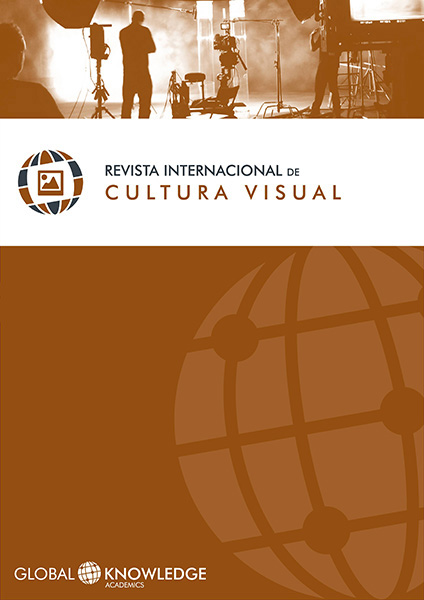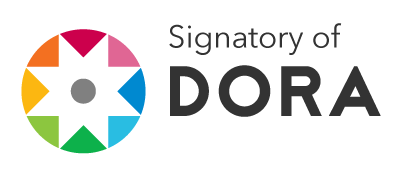New business models in broadcast television: the Netflix case
DOI:
https://doi.org/10.37467/gka-revvisual.v5.1547Keywords:
Cloud television, Television programming, Netflix, Binge watchingAbstract
Netflix, a platform with more than 100 million users in the world, has forever changed the way television is produced and consumed. This article analyzes how this new television model convergent with Internet has transformed the concept of programming and teleclairvoyance through intensified viewing or binge watching. A conceptual review identifies the main theoretical displacements on television, programming and audiences generated by the platform, as well as a documentary analysis of news articles on the subject, and the visualization of the Original contents published until May 2017.
Downloads
Global Statistics ℹ️
|
2451
Views
|
3626
Downloads
|
|
6077
Total
|
|
References
Cornejo, J. (2016). El caso Netflix (2012-2015) Nuevas formas de pensar la producción, distribución y consumo de series dramáticas. Barcelona: Universitat Ramon Lull, Tesis doctoral. Disponible en: http://www.tdx.cat/bitstream/handle/10803/386244/Tesi_Josefina_Cornejo.pdf?sequence=1&isAllowed=y Consultado en abril de 2017
El Comercio (11 de enero de 2016) La historia de Reed Hasting: el creador de Netflix. Disponible en: http://elcomercio.pe/economia/negocios/historia-reed-hastings-creador-netflix-261045 Consultado el 17 de mayo de 2017
Greene, A. (5 de diciembre de 2013). How 'Lilyhammer' Changed the TV World. Rollingstone. (Online). Disponible en: http://www.rollingstone.com/tv/news/how-lilyhammer-changed-the-tv-world-20131205#ixzz3007H0e11 Consultado el 7 de mayo de 2015.
Sánchez, J. (8 de junio de 2016). Ted Sarandos, número dos de Netflix. “Nuestros contenidos muestran un mundo más cercano al real que el de la tele. (online). Disponible en: http://www.revistagq.com/noticias/articulos/ted-sarandos-netflix-mas-diverso-tele-tradicional-medida-visionado/24032 (Consultado el 2 de mayo de 2017)
Telegraph.co.uk. (2013). Kevin Spacey: James MacTaggart Memorial Lecture in full. [online] Disponible en: http://www.telegraph.co.uk/culture/tvandradio/10260895/Kevin-Spacey-James-MacTaggart-Memorial-Lecture-in-full.html [Consultado el 10 de mayo de 2017].
Netflix media center (21 de septiembre de 2016) Estás enganchado y Netflix sabe por qué. (Online) Disponible en: https://media.netflix.com/es/press-releases/youre-still-hooked-and-netflix-knows-why Consultado el 30 de abril de 2017
Netflix Media Center (2016) Netflix & Binge: New Binge Scale Reveals Tv Series We Devour and Those We Savor https://media.netflix.com/en/press-releases/netflix-binge-new-binge-scale-reveals-tv-series-we-devour-and-those-we-savor-1 Consultado el 17 de mayo de 2017
Netflix (Abril de 2017) Carta a los accionistas. (Online)https://ir.netflix.com/index.cfm
Ojer, T. Canapé, E (2012) Nuevos modelos de negocio en la distribución de contenidos audiovisuales: el caso Netflix. Revista Comunicación, Nº10, Vol.1, año 2012, PP.187-200. (Online) Dispoinible en: http://revistacomunicacion.org/pdf/n10/mesa1/015.Nuevos_modelos_de_negocio_en_la_distribucion_de_contenidos_audiovisuales-el_caso_de_Netflix.pdf
Ramonet, I. (2015) El fin de la televisión de masas (Online). Le Monde Diplomatic en Español. Enero de 2015, n° 231. En: http://www.monde-diplomatique.es/?url=editorial/0000856412872168186811102294251000/editorial/?articulo=72f359bb-21c8-44f0-81ad-9581d81c50e1 Consultado el 17 de abril de 2017.
Scolari, C. (2008a). This Is The End. Las interminables discusiones sobre el fin de la televisión. La Trama de la Comunicación, 13, 13-25. Disponible en http://www.redalyc.org/articulo.oa?id=323927063001 - DOI: https://doi.org/10.35305/lt.v13i0.69
Scolari, C. (2008b)Hacia la hipertelevisión: los primeros síntomas de una nueva configuración del dispositivo televisivo. Diálogos de la Comunicación, N° 77, julio-diciembre de 2008. Disponible en: http://comunicacion3unlz.com.ar/wp-content/uploads/2014/07/Hacia-la-hipertelevision-Experiencia-Hipertexttual-Scolari.pdf Consultado el 17 de abril de 2017
Sánchez, J. (8 de junio de 2016). Ted Sarandos, número dos de Netflix. “Nuestros contenidos muestran un mundo más cercano al real que el de la tele. (online). Disponible: http://www.revistagq.com/noticias/articulos/ted-sarandos-netflix-mas-diverso-tele-tradicional-medida-visionado/24032 (Consultado el 2 de mayo de 2017)
Downloads
Published
How to Cite
Issue
Section
License
Those authors who publish in this journal accept the following terms:
-
Authors retain copyright.
-
Authors transfer to the journal the right of first publication. The journal also owns the publishing rights.
-
All published contents are governed by an Attribution-NoDerivatives 4.0 International License.
Access the informative version and legal text of the license. By virtue of this, third parties are allowed to use what is published as long as they mention the authorship of the work and the first publication in this journal. If you transform the material, you may not distribute the modified work. -
Authors may make other independent and additional contractual arrangements for non-exclusive distribution of the version of the article published in this journal (e.g., inclusion in an institutional repository or publication in a book) as long as they clearly indicate that the work was first published in this journal.
- Authors are allowed and recommended to publish their work on the Internet (for example on institutional and personal websites), following the publication of, and referencing the journal, as this could lead to constructive exchanges and a more extensive and quick circulation of published works (see The Effect of Open Access).













